Topping Your Pizza Like a Pro
Last month we explored the basics of extending dough, but of course that is only part of the process. Once the dough has been properly shaped you have some choices to make. Most amateur pizza makers dedicate a great deal of thought to what they are going to put on their pizza and that is certainly important (we will cover topping selection in an upcoming installment). Right now let’s focus on the how and why of topping a pizza correctly.
As in all things pizza related, you must first decide what you want the end result to be. The techniques of topping a Neapolitan pizza are different than the methods you would use to assemble an artisan American pie. No, I’m not kidding, the Italian aesthetic is completely different. American style pizza makers tend to construct their pizza with an eye toward uniformity. Pizzas are assembled so that toppings are evenly distributed and every bite contains a balanced combination of the selected ingredients. In Italy this is not always the case and pizza enthusiasts enjoy the fact that each bite is unique. Even on a pizza as simple as the Margherita you will experience a wide variety of individual flavors.
For American pizza the ideal is unsurprisingly more democratic. Toppings are evenly spread and all bites are created equal. If a pizza has mushrooms, sausage and onions for example, every slice is expected to have a balanced combination of those ingredients. The difference can be traced back to the way pizza was originally consumed on the streets of Italy where the whole disc was folded twice before eating (see illustration). With this method the ingredients would blend together to create a balance of flavors. An added bonus of this method is that the pizza could be eaten on the street without toppings spilling on to your clothes.
For now let’s explore the construction of a simple American style cheese pizza. Everyone knows how to do that right? Well, maybe not. Typically I see amateurs and even some pros doing some things that seem right but may not yield the best result. We can start with sauce. I strongly recommend that you get a ladle that is the size of your determined sauce portion and learn how to use it properly. If your recipe calls for 3 ounces of sauce use a 3 ounce ladle. This will speed up your process and give you better control. Typically sauce is poured on to the center of the pie and spread out in circular motion moving out from there. As usual there’s more to it than that. Remember that if you plan on cutting the pizza into slices the tip is the weakest point. That means the center of the pizza should have the thinnest application of sauce and toppings. I suggest that you actually leave a small center point bare. Make a circle of sauce and spread from there using your ladle. Be careful not to put sauce on the cornicione as it will burn and become bitter. As you get close to the area where the cornicione rises up (this area is called the sauce line) tilt the ladle as illustrated. If you are going to add basil before baking now is a good time to do it. Basil does not like heat, so placing it under the cheese will protect it and allow the basil to flavor your tomato sauce.
If you are using low moisture mozzarella never, and I mean NEVER, use pre shredded cheese. Cheese starts to lose flavor the minute it is shredded. So buy high quality mozzarella and shred it just before using. Don’t dump the cheese in the center. Toppings will melt towards the middle which is typically the thinnest point. Start by placing cheese at the sauce line and work your way in with the heaviest concentration of cheese at the outer edge and a diminishing amount as you move towards the center.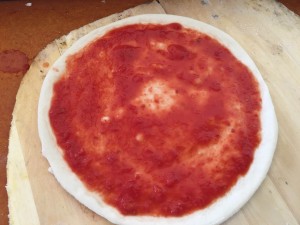
The modern trend is for much of the finishing ingredients to be applied after baking. When the pizza comes out of the oven grate a nice pecorino Romano, Grana, or Parmagiano on the pie. Complete your pizza with the best quality olive oil you can find (I prefer a fruity less peppery oil on basic cheese pizza) Place the oil on the pie just before serving so the fragrance blooms. If you have opted to use basil after baking, tear the leaves on the pizza after you have cut the pie so all of the basil is on the pizza and not on the blade.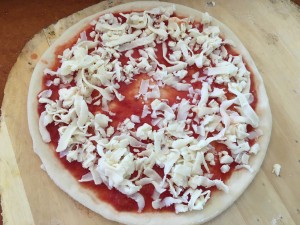
Next time we will explore how to prepare and combine various additional toppings.
Recent Articles by John Arena
Comments
Add Comment
You must be logged in to post a comment.



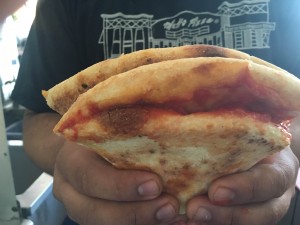
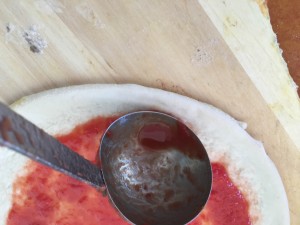
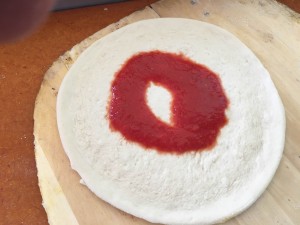
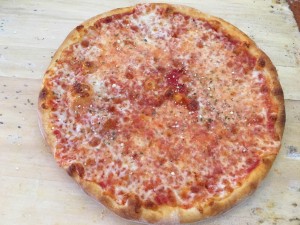







Another great article with lots of tips and tricks. As I understand it: don’t put sauce in the center of the pie…correct?
“Be careful not to put sauce on the cornicione as it will burn and become bitter.”